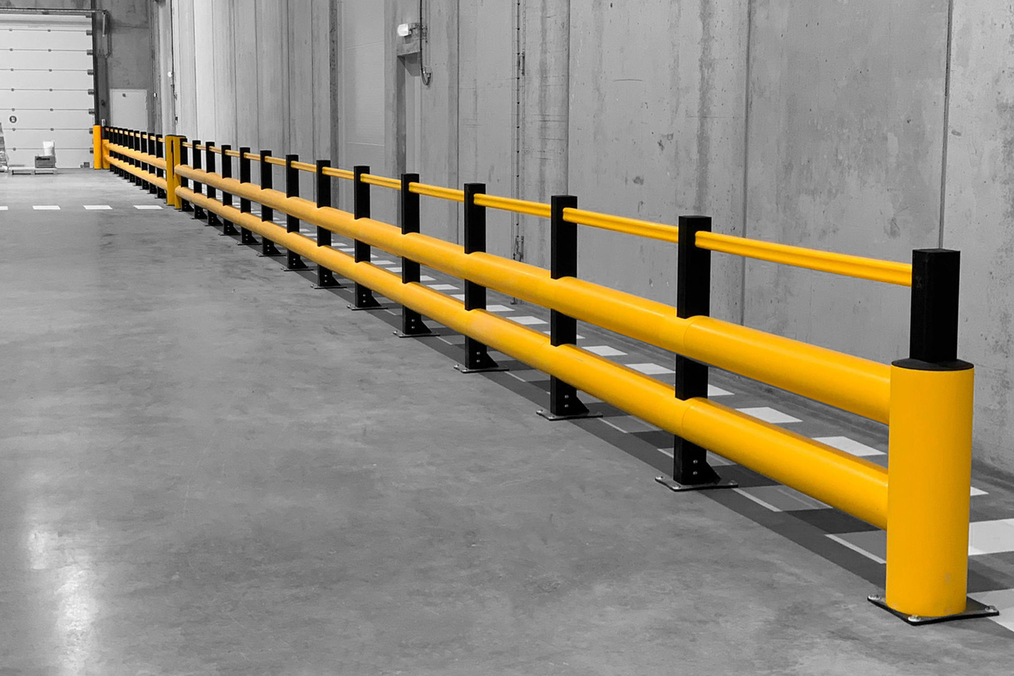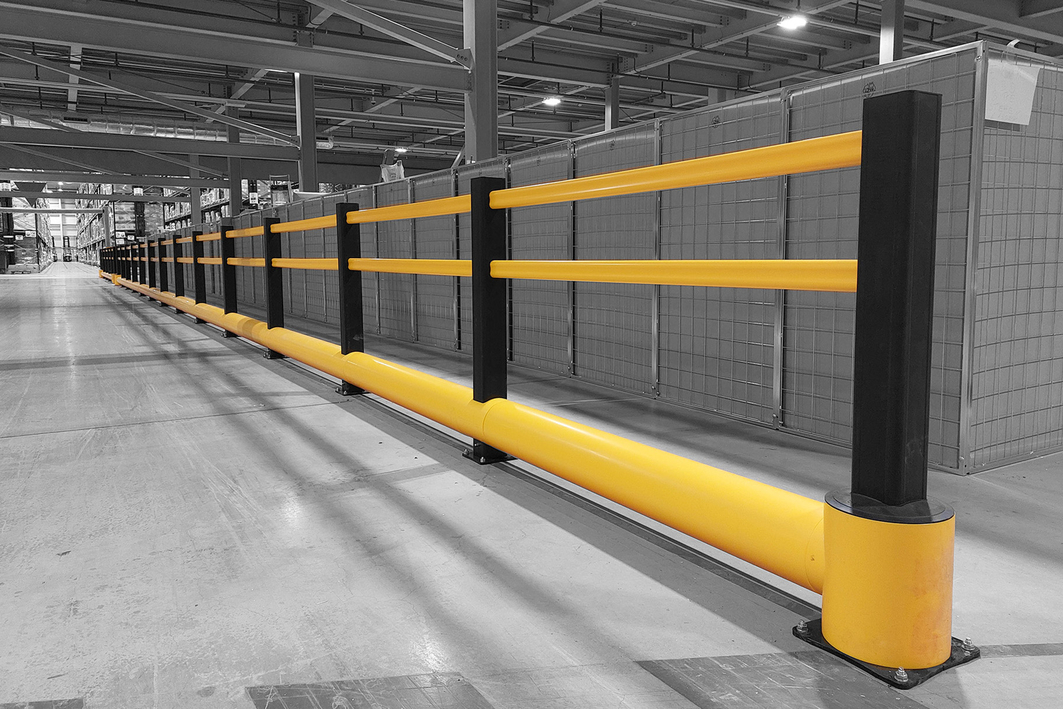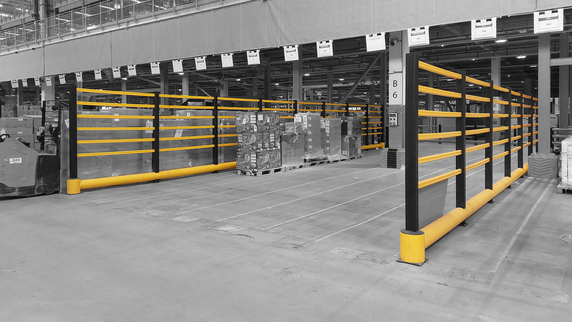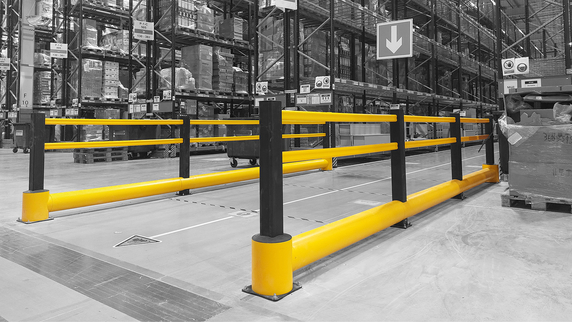Tips for creating a traffic plan: theory and practice
Turning your work environment into a safe workplace is not something that can be done overnight. Although organisations put employee safety first, they often fail to consider the underlying processes. They pay too little attention both to preventive measures and to ensuring the efficient circulation of vehicles in their work environment. This is why creating a traffic plan is the next important step after conducting a risk assessment. A traffic plan maps traffic flows and identifies bottlenecks.
The following tips have been put together to help you understand what a traffic plan means in theory and in practice.

What is a traffic plan?
A traffic plan identifies all the traffic flows and intersections that pedestrians, trucks, forklifts and other vehicles follow in your organisation. It gives you an overview of traffic rules, circulation, bottlenecks and hazardous situations throughout your site. It briefs employees and visitors, highlights key points of interest and provides guidelines on safe conduct.
Why is a traffic plan important?
A traffic plan is essential because it helps to create a safe working environment for different users. Pedestrians, internal transport vehicles and lorries all share the same space, which creates major safety risks. A traffic plan shows you how to optimise these traffic flows and increase safety.
What is important to include in a traffic plan?
Creating a traffic plan is not an overnight process. The first question to ask yourself is: should I make the traffic plan alone or ask an expert for assistance? While you are no doubt very familiar with your business environment, you may yet be overlooking a few high-risk situations. In other words, asking for help is a good idea.
An effective traffic plan is a balancing act between different aspects:
- Bottlenecks
Where do problems occur or have the potential to occur?
- Traffic flows
What modes of transportation move around your site and what paths do they take?
- Regulations and internal traffic rules
What are the traffic rules on site? What are the rules for organising goods within the company? Find out how to organise your warehouse more effectively.
- Accident prevention and employee protection measures
There is a lot of work involved here, including drawing up a clear evacuation plan and setting out floor plans with risk zones. In addition, you will need to install the requisite signage and physical safety protection measures on site. For example, it is important to separate road users safely. Each user – pedestrians, forklift trucks, lorries – needs its own space in which to move. Be sure to clearly define how drivers and pedestrians should use the space and implement this in the form of physical protection measures, e.g. safety barriers, bollards, handrails, safety gates, etc.
How to draw up a traffic plan
When creating a traffic plan, it is helpful to work in phases.
- Inventory
Phase 1 involves mapping all traffic flows. You will also list existing resources, current traffic regulations and signage.
During this phase, you talk to the prevention consultant, as well as the warehouse and production managers, forklift or pallet truck drivers and other employees. They face these risks every day, so their input is vital. Their input also makes them feel involved, which ensures they will follow the rules and act as ambassadors.
- Finding solutions
In the second phase, you will look for potential preventive solutions and protection products. These solutions should channel dangerous traffic flows and enforce new traffic rules. For example, you can take various physical protection measures. You look at everything in detail with the aim of making the workplace safer.
- Setting rules
In the third phase, you make arrangements to implement the traffic plan. Clear instructions in the form of rules and agreements enable you to put the plan into practice. The solutions are clearly communicated to ensure that everyone is informed and there is no confusion. You decide which colours will be used for signage in the work environment as well as the rules, lines and signs that should take priority.
- Agreements and instructions
Implementation is the fourth and final stage. You need to be able to count on the commitment and cooperation of your internal staff and external parties.
How do you put a traffic plan into practice?
To put a traffic plan into practice, the first step is to install signage. This is easy to do using floor markings. Floor marking tape can be used to indicate clear walking or driving zones, as well as the direction of travel and traffic routes for pedestrians and forklift drivers. The markings also indicate the required distance between pedestrians and forklift trucks.
They can also be used to designate different zones. Determine which area can be used for the work area, storage area or parking area. This prevents lanes or pedestrian areas from being used to unload goods.
To create a clear structure and understanding of what the markings mean, use the following colour definitions:
- Red: Prohibited area
- White: Storage area
- Yellow: Lanes and parking
- Green: free zone
- Blue: pedestrian zone
In addition to floor marking tape, you can use other methods of signage. For example, pictograms are a good way to attract attention. We recommend that you follow the ISO 3864 colour scheme when applying safety markings and signs.
- Yellow with black letters: Caution and instructions to avoid damage/injury, warning
- Blue with white letters: designation or obligation and protection
- Green with white letters: Help indicator, information
- Red framed sign with pictogram prohibited
- Red area with white letters: emergency prevention
However, other colours can be used, such as orange safety markings for chemical storage. Grey and black line markers can be used to change lines that no longer match the current colour scheme.
Thanks to floor marking tape, everyone knows exactly where to stand in order to work safely. It goes without saying that the markings used should be carefully considered to ensure the objectives are met. However, floor markings are only a preventive measure. They do not provide protection against collision or impact. This is why it is also recommended to install physical protection measures.
Safety barriers can physically separate your road users and protect them from each other. They also protect infrastructure, vehicles and machinery. Various products are available: barriers, bollards, handrails, kick rails, column protection, rack protection, safety gates, etc.
For information on how to apply polymer safety barriers in your industry, read our industry-specific white papers and discover the safety solutions that are most relevant to your situation.


